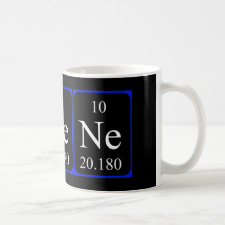
Authors: Ceglowski M, Smoluch M, Reszke E, Silberring J, Schroeder G
Article Title: Molecularly imprinted polymers as selective adsorbents for ambient plasma mass spectrometry.
Publication date: 2017
Journal: Analytical and Bioanalytical Chemistry
Volume: 409
Issue: (13)
Page numbers: 3393-3405.
DOI: 10.1007/s00216-017-0281-2
Alternative URL: https://www.researchgate.net/publication/315463551_Molecularly_imprinted_polymers_as_selective_adsorbents_for_ambient_plasma_mass_spectrometry
Abstract: The application of molecularly imprinted polymers (MIPs) as molecular scavengers for ambient plasma ionization mass spectrometry has been reported for the first time. MIPs were synthesized using methacrylic acid as functional monomer; nicotine, propyphenazone, or methylparaben as templates; ethylene glycol dimethacrylate as a cross-linker; and 2,2'-azobisisobutyronitrile as polymerization initiator. To perform ambient plasma ionization experiments, a setup consisting of the heated crucible, a flowing atmospheric-pressure afterglow (FAPA) plasma ion source, and a quadrupole ion trap mass spectrometer has been used. The heated crucible with programmable temperature allows for desorption of the analytes from MIPs structure which results in their direct introduction into the ion stream. Limits of detection, linearity of the proposed analytical procedure, and selectivities have been determined for three analytes: nicotine, propyphenazone, and methylparaben. The analytes used were chosen from various classes of organic compounds to show the feasibility of the analytical procedure. The limits of detections (LODs) were 10 nM, 10, and 0.5 μM for nicotine, propyphenazone, and methylparaben, respectively. In comparison with the measurements performed for the non-imprinted polymers, the values of LODs were improved for at least one order of magnitude due to preconcentration of the sample and reduction of background noise, contributing to signal suppression. The described procedure has shown linearity in a broad range of concentrations. The overall time of single analysis is short and requires ca. 5 min. The developed technique was applied for the determination of nicotine, propyphenazone, and methylparaben in spiked real-life samples, with recovery of 94.6-98.4%. The proposed method is rapid, sensitive, and accurate which provides a new option for the detection of small organic compounds in various samples
Template and target information: nicotine, propyphenazone, methylparaben
Author keywords: Molecularly imprinted polymers, Ambient plasma mass spectrometry, selective adsorption, Molecular scavengers, Flowing atmospheric pressure afterglow



Join the Society for Molecular Imprinting

New items RSS feed
Sign-up for e-mail updates:
Choose between receiving an occasional newsletter or more frequent e-mail alerts.
Click here to go to the sign-up page.
Is your name elemental or peptidic? Enter your name and find out by clicking either of the buttons below!
Other products you may like:
 MIPdatabase
MIPdatabase









